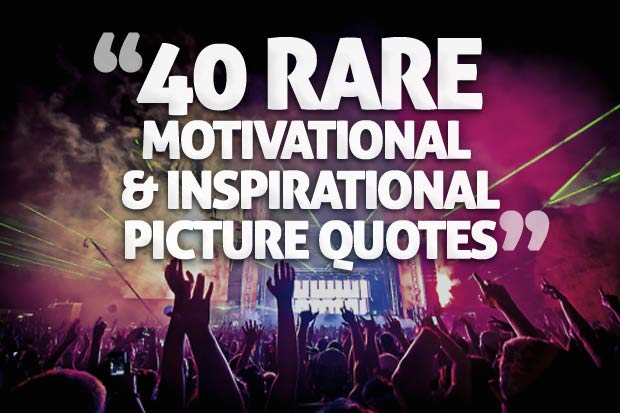Success Advice
Why Your Dreams Are All You Got And You Can Never Give Up

The most precious thing we have in our life is our dreams. Your dreams are unique to you, and no one has a dream that is exactly like yours in every way. Everything you think you have you don’t, nothing will last forever.
Your life can be summed up with two words: “Your Dream.” When all is said and done, whether you did or didn’t achieve your dream is the only measure of success there is. Every component of your life and everything you think about is indirectly related to your dream, so you better be damn sure you get some clarity on exactly what that dream is!
When you step on stage to sing or go to the gym to work on your fitness goal, you have to give every ounce of emotion and energy that you have. You have to picture in your mind every time that this is your last day on Earth and that it’s now or never to achieve your goal, and feel great in the moment about it.
The journey of your dream is really just the journey of your life. It’s going to be the hardest thing you ever try and achieve, and there are going to be times where it seems like your dream is not meant for you, and it’s all too hard.
If your life dream were easy, then we all would have achieved our ultimate purpose, and we would all be flocking to Hawaii to relax on the beach. To give up on your dream is to give up on life. To give up on life is to defy the reason you were given the opportunity to live in the first place.
Until you place your dream as the single most important thing in your life, you will always be wondering why you are unhappy and disappointed with your life.
Below are the six things you can expect when you chase your dreams:
1. When your life changes forever, you feel it
If your dream doesn’t make you consistently emotional every step of the way, and you don’t feel it, then there is something wrong. As your dream starts to go from a foggy haze to a crystal clear reality, your life changes forever, and you finally feel it.
This initial feeling is strange, and it will bring tears to your eyes. Grown men with huge muscles will cry like baby puppy dogs and the people around them will wonder what is going on. The forty-year-old boy has now become a man.
The tears are caused by the fact that your mind has now connected to the path of your dream. The emotion is caused because you now know what you must do, and the remainder of your life will be dedicated to this cause.
This shift in your life will cause everything else to be forgotten about, and all the other parts of your life will become secondary. When that phone call comes through asking you to go to the pub for a drink, you say no without even thinking about it. Nothing can replace the feeling you get from your dream once it is realised.
2. Your turn will come so be ready to take it
There is a point in everyone’s life when our turn comes. This turn is an opportunity for us to rise to our higher self. We have to compound all the years of preparation and emotion to this single moment and let it unleash in a short period.
You’ll know when your time comes, and everyone get’s at least one chance. You’ll need to show up with your game face on and have nothing else in your mind other than your dream. If you cease this moment and take your turn, then your life will never be the same because you will have turned the corner and taken the path of your dream forever.
3. The bigger the dream, the greater the reward
The dream you chase will never become a reality and give you what you are looking for if you don’t dream big! Dreams have an element of self-motivation, but that motivation will only be enough if the dream is of a sufficient size.
For example, if your goal is to be a singer, then your dream should be to become a worldwide superstar and for everyone to know you’re the best at singing. There is no point having a dream if you don’t have the belief to back it up and know that you can be world-class in your endeavor.
Seemingly large dreams usually attract enormous rewards for those who dare to think in this way. If you think about the opposite, small dreams by themselves deliver mediocre rewards and so you get left with a feeling of, is this all there is?
There is nothing wrong with small dreams but they need to form the basis for one massive overarching dream. I have a smaller dream of being good at public speaking, but it’s part of an overall dream to inspire millions of people worldwide through entrepreneurship and personal development.
Have a think about your own dreams and see if you have a big enough dream. If the result is you don’t, then it’s time to think about it long and hard, and come up with one.
“Everyone has a dream hiding inside of them, and only you can let it out and show the world”
4. Your dream becomes more than what people see
Let’s just say your dream is to be a singer. When people look at you, they think you are just singing, but the thing about dreams is it’s more than that. To everyone else, your dream looks like a hobby or some boring everyday activity, to you, it should be the only thing you wake up for.
What starts out as recreational singing becomes something you do more and more of. Then, one day, you are asked to sing somewhere. Before you know it, you’re being paid to do what you love, and you work even harder. Finally, at the point in which you have been able to link emotion to what you do, the tide turns, and an opportunity comes your way that you have always visualised.
The thing about this opportunity is that it doesn’t just come from nowhere; it comes from you following your dream and perfecting your craft. The opportunity that leads you to the greatest thing you will ever do in your life was earned by you. It’s not a fluke, and no one can ever take it away from you.
Forget what other people see your dream as, and concentrate only on visualising on what you see your dream looking like. In the end, you will be the captain of the ship sailing towards your dream – no one else.
Of course, what you do might be singing to some, and what they do may be a joke to you, just worry about your dream, and your struggle, cause your one pursuit will take every ounce of positive energy you have. You won’t have any extra energy to waste on anything else.
5. Stand tall and hold your head up
As you stand between the short gap of darkness of where you are right now and your dream, it will be scary. You will be very emotional, and people will think you have gone slightly nuts. When this moment comes your way – and it will – stand tall and hold your head up high.
Have the belief that everyone is supposed to find their dream including you. Know that this is your moment and no one can spoil it for you.
6. This dream is all you got
The last words I am going to say on this matter are that your dream is all you got. To illustrate this, I am going to tell you a story.
For years, I put my time into different endeavors and always gave up just before reaching success. I kept chasing the next so called dream and never planned a single day. I let life happen to me and didn’t believe in dreams.
I thought dreams were something that only special people got to achieve who were lucky or had the right surroundings. Later on, I figured out that the wrong surroundings are where all dreams worth talking about are made from.
I busted my chops every day and put emotion into things that gave me nothing back. Whether it was drums, djing, music producing, or business; I always focused on what everyone else was doing. I had no idea that what I was seeing in other people’s dreams was only what they wanted me to see.
Everything looked so easy because I never saw the struggle. I never saw how much time these so called successful people who were achieving their dreams put in. I never saw the tears, the broken relationships, the alcohol-fuelled nights. It all just looked so easy for these high achievers.
I wondered to myself “why can’t I ever have my dream?” I was asking the wrong questions, and that’s why I was getting the wrong answers to my dreams. Through these different dreams, my mind became like a maze that had no exit.
My thoughts were busy, and I couldn’t see anything clearly. Through all of these experiences, I ultimately gave up on everything. I never achieved any of the dreams I thought I was destined for. As it turns out, without dreams, life looks pretty bleak.
That’s why your dreams are all you got my friends. Every second of every day should be spent chasing them no matter what. Just don’t do what I did and give up, or think there is something else in life other than your dreams – there isn’t.
“There is one rabbit hole you should fall down, and that is the one that contains your dream” – Tim Denning
Now is your time. Get some paper. Brainstorm your dreams. Reconfirm your dreams. Then, follow your dreams until you have no oxygen left in your lungs, and you’re on the way out through the gates of life as we know it. Look back, be proud, and know when this time comes, that your dreams were all you had, and you’re glad you followed them, and never gave up.
I would love to know, what is your dream? Let me know in the comments section below or on my website timdenning.net and my Facebook.
Business
If Your Business Internet Keeps Letting You Down, Read This
From smoother operations to better security, dedicated internet access is quietly powering today’s high-performing businesses.

Today, a dependable internet service is the bedrock for uninterrupted business operations. Many organizations rely on stable online connections for communication, data transfer, and customer interaction. (more…)
Did You Know
How Skilled Migrants Are Building Successful Careers After Moving Countries
Behind every successful skilled migrant career is a mix of resilience, strategy, and navigating systems built for locals.

Moving to a new country for work is exciting, but it can also be unnerving. Skilled migrants leave behind familiar systems, networks, and support to pursue better job opportunities and a better future for their families. (more…)
Life
10 Research-Backed Steps to Create Real Change This New Year
This New Year could finally be the one where you break old patterns and create real, lasting change.

Every New Year, we make plans and set goals, but often repeat old patterns. (more…)
Change Your Mindset
The Silent Skill That Makes People Respect You Instantly
What truly earns respect and why most people go about it the wrong way

Everybody craves respect but not everyone earns it. Some people believe that a title, years of experience, or a position of authority automatically entitles them to respect. (more…)
-

 Did You Know4 weeks ago
Did You Know4 weeks agoHow Skilled Migrants Are Building Successful Careers After Moving Countries
-

 Health & Fitness2 days ago
Health & Fitness2 days agoWhat Minimalism Actually Means for Your Wellness Choices
-

 Business1 day ago
Business1 day agoIf Your Business Internet Keeps Letting You Down, Read This
-

 Did You Know11 hours ago
Did You Know11 hours agoWhy Most Online Courses Fail and How to Fix Them


























6 Comments